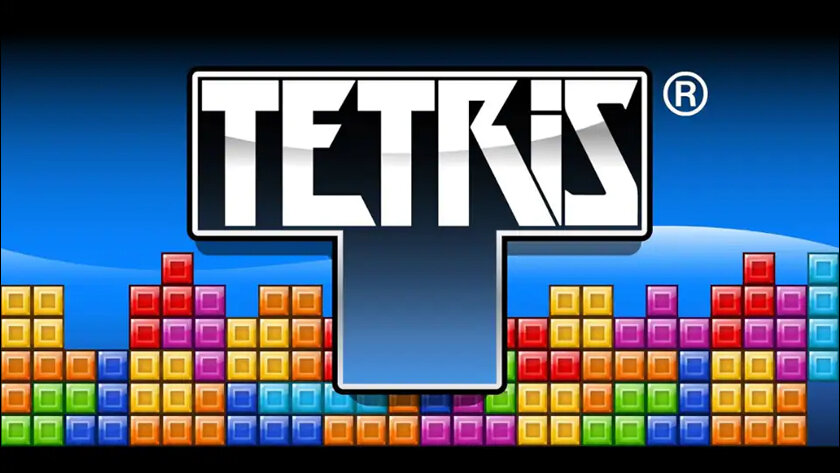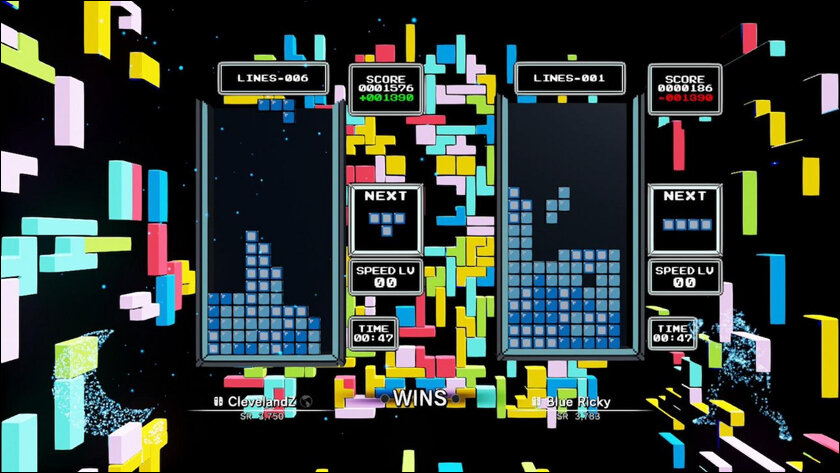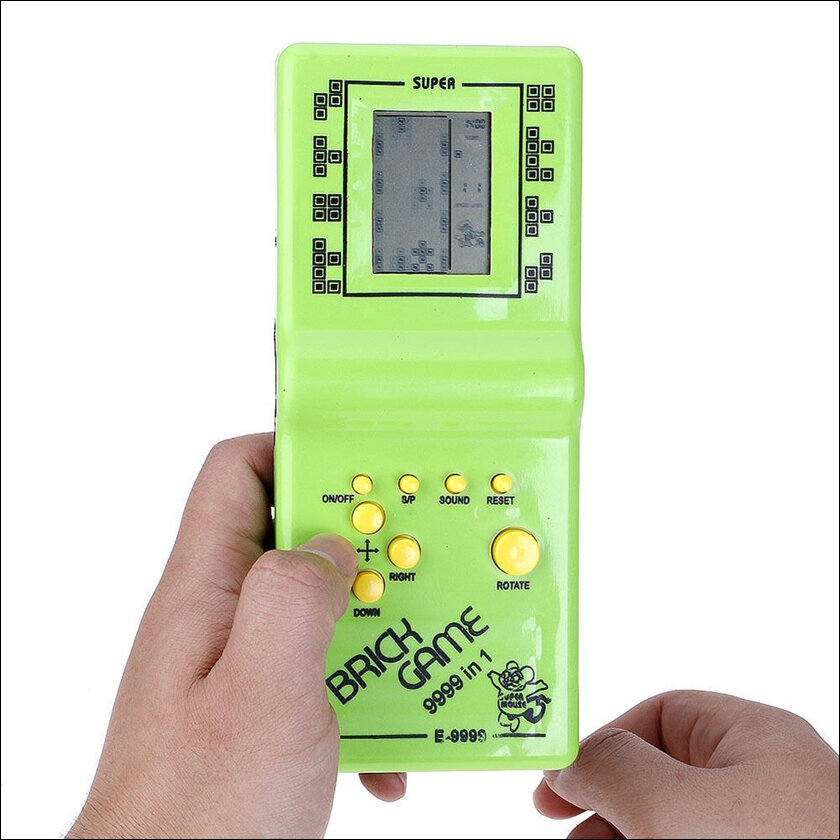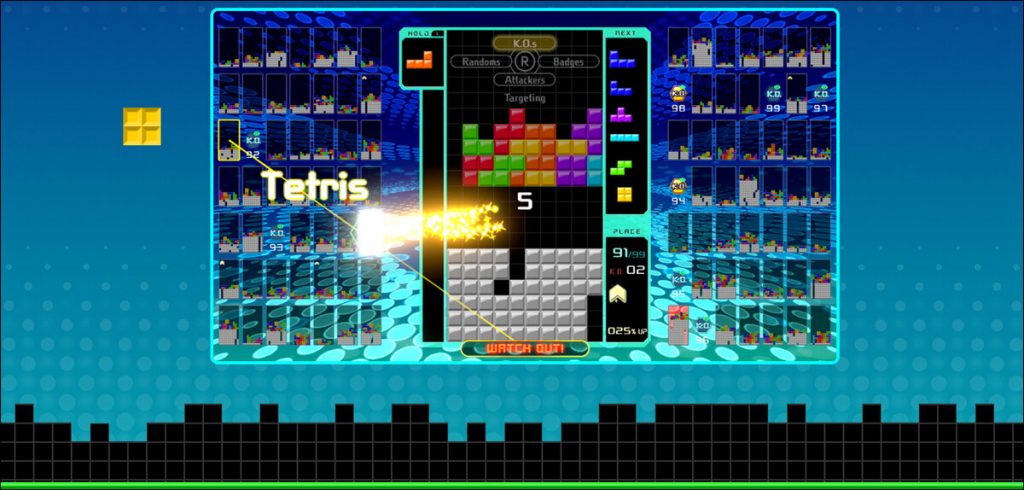“Tetris, you brought us the delight in simplicity and taught us more than just stacking”, says Dinesh.
Few names ring as true in the world of video games as Tetris. Born in the depths of Soviet Russia in the 1980s, this legendary puzzle game has crossed decades and platforms to become a timeless classic. Tetris has grabbed the hearts and minds of gamers all across the world with its deceptively basic yet addicting gameplay.
I recall playing this game with my friends and clearing the lines for hours in order to earn high scores on our portable devices. I’d like to walk you through an intellectual game that utilizes your cat-like reflexes and hand-eye coordination to advance to the next level.

The Gameplay:
Tetris is fundamentally a puzzle game that tests players’ ability to control falling tetrominoes to form whole horizontal lines. Your quick thinking and intelligent positioning become essential to succeed as the blocks drop at an increasing rate.
You earn points for clearing lines and frees up space for new blocks, but a hasty move might result in an enormous mess! Although the gameplay is simple, mastering it is a talent that requires both ability and anticipation.
People of all ages are attracted to Tetris and it is one of its major advantages. Players of many ages and backgrounds are drawn into its compulsive grip as it transcends linguistic and cultural barriers. Tetris offers a thrilling challenge that never gets boring, regardless of whether you’re an experienced gamer or a casual player. It is a well-liked game on many gaming systems, from the original Game Boy to contemporary smartphones, thanks to its accessibility and pick-up-and-play simplicity.
Tetris has demonstrated its tenacity throughout the years, changing with the changes yet retaining its core functionality. The game has undergone countless modifications since its humble beginnings on Soviet Electronika 60 computers until it became the global sensation that it is today. However, the primary gameplay element—stacking blocks to form lines—remains as engrossing as ever.
Without its recognizable melody, what would Tetris be? “Korobeiniki,” a captivating and enduring song, has come to represent the game. Tetris has had a significant cultural influence, as seen by the players’ ability to recall the song’s catchy tune long after putting down their controllers.
The Perfect Puzzle:
Tetris is more than just a game; it’s a testament to the power of simplicity and the joy of mastering a challenge. It’s a reminder that some of the greatest gaming experiences come from the brilliance of elegant design. As you immerse yourself in the world of falling blocks and clearing lines, you’ll discover why Tetris remains an enduring symbol of gaming brilliance.
So, whether you’re a seasoned Tetris master or a newcomer ready to experience the puzzle magic, prepare yourself for a delightful journey through the world of timeless gaming. Let the blocks fall, clear those lines, and embrace the addictive joy of Tetris!

Ah, the nostalgia of Tetris for 90s kids – a flood of memories that takes us back to a simpler time filled with joy and excitement. For those of us who grew up in that era, Tetris was more than just a game; it was a cultural phenomenon, a symbol of our childhood gaming adventures.
There was something magical about the simple yet captivating gameplay of Tetris. We’d spend countless afternoons huddled around our Game Boy or NES, completely absorbed in arranging those blocks as they fell faster and faster. It was the perfect game for quick bursts of fun or long road trips with the family.
Portable Pleasure:
Tetris on the Game Boy was a breakthrough since it gave us the freedom to play our favorite game wherever we went. Tetris was a dependable friend that kept us amused on any occasion, from car journeys to waiting rooms. I’ll be honest here and admit that we even brought it to school to flaunt it to our pals, and all day long our adrenaline rush would be at its highest as we hoped to avoid getting discovered by the teachers.
Friendly Competitions:
Tetris brought friends and family together for friendly competitions and heated showdowns. Whether it was passing the Game Boy around during recess or challenging our siblings to see who could clear the most lines, Tetris always sparked friendly rivalries and big smiles.
The Tetris Theme Music:
Oh, how I love that music! Even when we weren’t playing the game, we would hum along to the Tetris theme song since it was so ingrained in our heads. It spread like wildfire among 90s youth all across the world as a cultural earworm. At the time, we used to hum the music everywhere we went because it was such a catchy tune popular with kids growing up in the 1990s.

Simple Yet Addictive:
In a world without smartphones and high-tech gadgets, Tetris stood out as a game that was both simple and addictive. We didn’t need flashy graphics or complex storylines; Tetris provided pure, unadulterated gaming bliss.
We can’t help but yearn for those carefree days of youth gaming when we think back on those fond Tetris memories. Tetris was more than just a game; it was a shared experience that gave youngsters all across the world in the 1990s joy, friendship, and awe. The game’s legacy continues to this day, serving as a reminder that the most lasting memories may be made from the simplest of joys. As a result, whenever you see those falling blocks, take a minute to grin and recall how much fun it was to play Tetris as a young person in the 1990s.
Tetris has been made available on a wide range of gaming platforms over the years, owing to its immense popularity and enduring appeal. Here are some of the platforms on which Tetris can be found:
Game Boy: The Game Boy version of Tetris, released in 1989. NES (Nintendo Entertainment System): Tetris was released for the NES in 1989. Arcade Machines, PC, Mobile Devices in the era of smartphones, Tetris has become readily available on iOS and Android devices. Gaming Consoles over the years, including PlayStation, Xbox, and Nintendo’s home consoles (Nintendo Switch, Wii, etc.).
Handheld Consoles: In addition to the Game Boy, Tetris has been released on other handheld consoles, such as the Nintendo DS and the PSP (PlayStation Portable).

Most Popular Platform:
Determining the single most popular platform for Tetris is challenging due to the game’s extensive availability across numerous devices. However, the Game Boy version of Tetris is often considered one of the most iconic and influential, contributing significantly to the game’s widespread recognition and appeal.
Overall, the popularity of Tetris can be attributed to its accessibility, addictiveness, and the way it adapts well to various gaming platforms. Whether on a handheld device during a commute or on a classic gaming console, Tetris continues to captivate players of all ages, making it one of the most enduring and cherished video games of all time.
Tetris provides players with a number of difficulties and gaming options with its various game modes and gameplay variants. Each level adds distinctive gaming elements while maintaining the same central goal—clearing lines by arranging falling tetrominoes. The following are some of the most typical Tetris game modes:
1. Marathon Mode: This is the classic and most well-known mode of Tetris. In Marathon Mode, players aim to clear as many lines as possible before the stack of blocks reaches the top of the playfield. The game gradually increases in speed, adding to the challenge.
2. Sprint Mode: In this mode, players are tasked with clearing a set number of lines in the shortest time possible. It’s all about speed and precision as you race against the clock to achieve the target line count.
3. Ultra Mode: Similar to Sprint Mode, Ultra Mode challenges players to clear a set number of lines, but there’s no time limit. Players have the opportunity to strategize and aim for high scores.
4. T-Spin Mode: T-Spin is a gameplay technique that involves rotating a T-shaped tetromino into a tight space, creating a “T-spin” and clearing lines in a unique way. T-Spin Mode focuses on mastering this advanced technique to maximize points.
5. Endless Mode: As the name suggests, Endless Mode allows players to continue playing indefinitely without a time limit or a maximum level. The difficulty increases over time, providing a constant challenge.
6. Challenge Mode: Some Tetris games feature Challenge Mode, where players face unique puzzles or specific objectives to complete. These puzzles may require specific line clears, score targets, or other creative challenges.
Each mode introduces its own set of goals and challenges, adding depth and replay ability to the timeless game of Tetris. Whether you prefer the classic Marathon Mode or the competitive Battle Mode, Tetris offers something for everyone, making it a truly timeless and versatile gaming experience.
Tetris, our pixelated pal, farewell! It brings back happy childhood memories of building blocks with the Game Boy for hours and calling our towering mess “strategic.” Rivalry between siblings and laughter about sending junk lines. Tetris, you brought us the delight in simplicity and taught us more than just stacking. You endure over time, bringing smiles and memories. Tetris, I appreciate you for the enjoyable voyage. Keep falling and captivating new generations till we play again! Cheers to stacking!
In case you missed:
- Aladdin: A Magical Journey Through Nostalgia
- Bomberman Way to Blast
- An Im’Pac’tful Game!
- Adventure Island NES Game Walkthrough
- Duck Hunt – The Humourous Hunter
- The Tekken Take-Out
- “I am Batman!”
- Pinball – The March of Left and Right
- Embark on an Unforgettable Adventure with Tomb Raider – Lara Croft!
- Road Fighter – A Sprint Race for Cars









